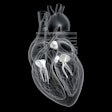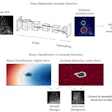
Patients are optimistic about the use of artificial intelligence (AI) in radiology, with a caveat: They don't want AI technology to break the connection between patient and care provider, according to a case study published February 14 in the Journal of the American College of Radiology.
In a workshop conducted to explore patients' attitudes toward AI in radiology, a team led by Dr. Scott Adams of the University of Saskatchewan in Saskatoon, Canada, found that participants strongly believed that AI should be developed and used with human connection in mind.
"Some participants were concerned about the lack of human connection that AI may imply and emphasized the need for 'human empathy' and the 'ability to understand with flexibility,'" the group wrote. "Most patients supported an integrated approach that relies on the advantages of both radiologists and AI and felt that a radiologist is still critical to interpret the AI output."
Radiologists are highly interested in using AI to improve workflow and patient care, and the technology's potential is broad -- from patient scheduling and imaging acquisition applications to exam interpretation triage, lesion detection and characterization, and automated reporting, Adams and colleagues noted. But information on patient attitudes about AI is limited. The investigators conducted a workshop to address this knowledge gap.
The workshop included 17 participants. Its purpose was to determine the following:
- Patients' initial perceptions of AI in the context of radiology
- Patient priorities regarding how radiology may be improved using AI
- How AI could be developed and evaluated in ways consistent with patients' values
Four themes emerged from the workshop: Fear of AI's "unknown" quality, whether AI is trustworthy, the concern that AI would erode human connection, and whether it would diminish "cultural ways of knowing and healing."
As for patient priorities for AI and radiology, participants listed the following:
- Improving access to imaging and reducing wait times
- Reducing time to diagnosis
- Increasing diagnostic accuracy
- Improving communication between patients and care providers
- Empowering patients to better understanding imaging results
Survey participants recognized the importance of data sharing for AI applications and emphasized that patients should have a role in developing AI algorithms, Adams and colleagues found. Some also emphasized the importance of evaluating "downstream impacts of AI on quality of life and mental health," the team noted.
Radiologists may be keen on AI, but more patient education about it is needed, and patients' concerns about AI must be taken into account, the researchers concluded.
"Despite enthusiasm among the radiology community for AI to improve patient care, misconceptions about AI may lead to a lack of trust among some patients," the team wrote. "Patient education regarding AI in radiology may be warranted, potentially through patient education campaigns. Dedication to patients' priorities will help determine which AI applications should be considered."




















